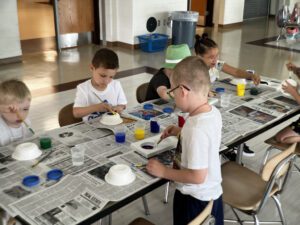In a more interconnected world than ever, understanding and appreciating the diverse tapestry of cultures is paramount. In all their varied forms, the arts serve as a bridge, connecting different civilizations and offering insights into their unique narratives. This article delves into the profound relationship between arts and cultural awareness, highlighting how artistic expressions foster global understanding.
A Mirror to Societies
– Art has always been a reflection of society. From ancient cave paintings to contemporary digital art, every piece tells a story of its time, people, and values. Engaging with art allows individuals to journey through time and space, understanding the ethos of different cultures.
Breaking Stereotypes
– Stereotypes and misconceptions often arise from ignorance. The arts challenge these preconceived notions by presenting authentic narratives. A film, a novel, or a song can offer a genuine glimpse into a culture, dispelling myths and fostering genuine understanding.
Universal Language of Emotion
– While languages may differ, emotions are universal. A Japanese haiku about love or an African drumbeat expressing joy resonates with audiences worldwide. The arts, in their emotive capacity, transcend linguistic barriers, connecting hearts and minds across continents.
Preservation of Heritage
– The arts play a crucial role in preserving the cultural heritage of civilizations. Traditional dances, folk songs, and indigenous art forms keep the spirit of cultures alive, ensuring that future generations can connect with their roots.
Promoting Dialogue and Exchange
– Art festivals, exhibitions, and cultural exchanges bring together artists from various backgrounds. These interactions promote dialogue, fostering mutual respect and collaboration between different cultural groups.
Empathy and Perspective
– Engaging with art allows individuals to step into another’s shoes. Whether it’s reading a novel set in war-torn regions or viewing a painting depicting poverty, art evokes empathy, making individuals more compassionate and open-minded.
Celebrating Diversity
– The global art scene is a testament to the world’s diversity. From the vibrant colors of Indian art to the minimalism of Scandinavian designs, the arts celebrate the myriad expressions of human creativity, emphasizing that diversity is not just to be tolerated but celebrated.
Education and Awareness
– Educational institutions increasingly integrate arts into their curriculum to promote cultural awareness. Students gain insights into different cultures by studying world literature, global music, or international cinema, preparing them to be global citizens.
Challenging Taboos and Norms
– Art has the power to challenge societal norms and taboos. Through subtle expressions or bold statements, artists worldwide address issues like gender inequality, racial discrimination, and religious intolerance, pushing societies towards introspection and change.
Building Bridges
– In times of geopolitical tensions, the arts emerge as unifiers. Collaborative art projects, joint musical concerts, or cross-border film ventures remind people of their shared humanity, building bridges even when political dialogues falter.
In conclusion, the arts are a source of aesthetic pleasure and a powerful tool for cultural education and understanding. In a world that often focuses on differences, the arts remind us of our shared humanity, common emotions, and intertwined histories. As global citizens, engaging with the arts is imperative, not just to enrich our souls but to foster a world where diversity is celebrated and every culture is understood and respected.




